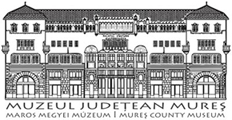Marisia - Maros Megyei Múzeum Évkönyve 30/1. (2010)
Articles
100 N. Man Generally, handles are of good quality and artistic execution, particularly the flat one decorated with deities. But, the imagination and originality of the potters were materialized in the case of simple decoration, like stylized plant motifs, too. The handles from Criste§ti show typological similarities to the other handles from Dacia, evidencing the circulation of patterns inside Dacia and the Empire, as well. The analyzed material can be generally dated to the second and third centuries, since the pieces were discovered by A. Filimon, without any stratigraphical indications. A more precise dating is possible only based on the chronology and typology made by V. Rusu-Bolindet. Such flat handles with curved sides and straight edge date from the first half of the second century, but in Dacia these were produced throughout the Roman domination.38 The pieces decorated with deities were dated by O. Floca to the mid-third century.39 The terracotta figurines Though without special artistic qualities, these objects give us clues about religious and ethnic background of the communities. They are specific products of the provincial art, roughly executed comparing to major works of the Greco-Roman workshops. They were made by casting moulds. To facilitate the combustion process, the figurines had a hole at the bottom. As other terracotta figures from Empire, the Dacian ones are also series products and do not represent a particular artistic value. The material and simple techniques, combined with the introduction of new form besides imitating the widely used ones, determined the variety of clay figurines. Statuettes with the same representation have many elements in common; even they were not cast in identical patterns. Among the terracotta figurines Venus is the most represented. It was hypothesized a worship on large scales of the goddess Venus, practiced especially in camps from Dacia, hypothesis partly justified by the discovery of such terracotta with predilection in the camps. Among the analogies for pieces from Criste^ti the ones from Buciumi,40 Apulum and Napoca41 can be mentioned, while for the representations of Silenus the best analogy is known from Parto§.42 43 Representations in stone Statuaria is illustrated by some works of good artistic level: a limestone statue representing Jupiter on his throne (the iconographic type Jupiter tronans or Verospi),4} the alabaster head of Iuno,44 a fragmentary statue of alabaster of Liber Pater or Hercules Bibax,45 Liber Pater’s marble head46 and the statue of a genius.47 It has to be mentioned as an outstanding fact, that 38 Rusu-Bolindet 1997, 355. 39 Floca 1953, 755-772. 40 Chirilä et al. 1972, pl. CXXX; CXXXI/2. 41 Teposu-David 1964, 473-476, fig. 7. 42 Pop 1967, 178, nr. 11, fig. 11. 43 Paulovics, 1944, 86, fig. 22; Isac 1974, 76-77, pi. II/3a-b; Husar-Man 1996, pi. VI/la-b. 44 Floca 1937, 8-9; Zrínyi 1977, 98; Husar-Man 1996, 28, pl. VI/2. 45 Pop 1970, 152; Husar-Man 1996, pl. VI/5. 46 Husar-Man 1996, 28, pl. VI/4. 47 Zrínyi 1977, 98, pl. L; Husar-Man 1996, 28, pl. VI/3.
